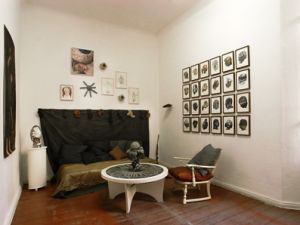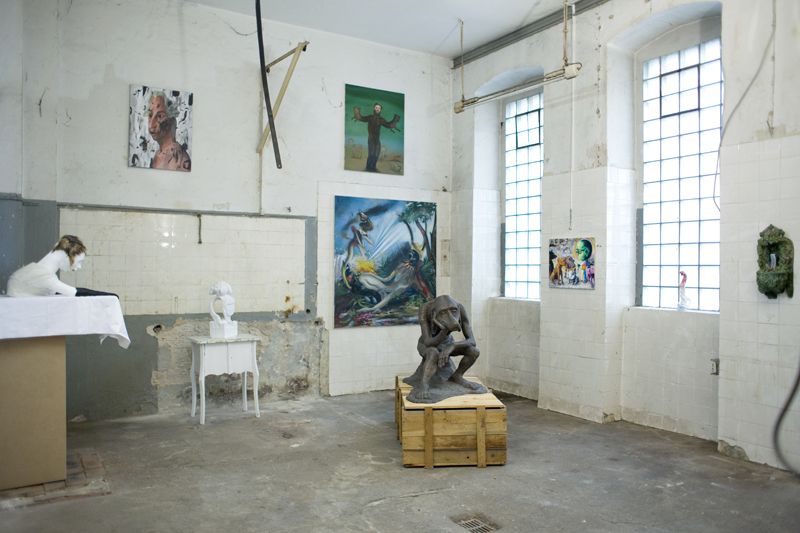La Vallée Patibulaire
La Vallée Patibulaire, 2011, duration: 3,5′,
music: Catherine Lorent/Gran Horno, Berlin

Groupexibition
c/o Caro Bittermann
Gustav-Müller-Str.18
10829 Berlin
25.-27. February 2011
Concert GRAN HORNO (Catherine Lorent)
25. February 2011 ab 8 pm
with
Sonja Alhäuser, Sofie Arfwidson, Guido Alfs, Heike Kati Barath, Nicole Bianchet, Caro Bittermann, Peter Böhnisch, Peter Bömmels, Lutz Braun, Mads Dinesen, Peter Duka, Hadassah Emmerich, Tim Ernst, Maurus Gmür, Maike Graef, Trixi Groiss, Gabi Hamm, Sebastian Hammwöhner, Axel Heil, Uwe Henneken, John Isaacs, Michael Kalmbach, Heike Kelter, Svenja Kreh, Michael Kunze, Nikolaus List, Catherine Lorent, Christian Macketanz, Stephan Melzl, Tilbert Oelke, Thomas Ravens, Stefan Rinck, Dennis Rudolph, Manfred Schneider, Kerstin Schröder, Veronika Schuhmacher, Astrid Sourkova, Martin Staedeli, Ernst Stark, Peter Stauss, Stepanek/Maslin, Caro Suerkemper, Alex Tennigkeit, Rebecca Thomas, David Tibet, Iris van Dongen, Gabriel Vormstein, Marcus Weber, Christian Weihrauch, Fabian Weinecke, Claudia Zweifel

LA VALLEE PATIBULAIRE
On the 25th, 26th and 27th of February 2011, a former butcher’s shop, located on the ”Red Island“ in Berlin Schöneberg, is going to transform into an exhibition gallery. The event is entitled ”La Vallée Patibulaire“, and it will awaken this sleeping beauty before it is transformed and renovated. The ”image“ of the exhibition is constructed by this resuscitating place, the choices of the artists hosting (Caro Bittermann, Caro Suerkemper, Peter Duka, and Catherine Lorent) and its polysemous title ”Vallée Patibulaire“.
”Vallée Patibulaire“ (also known as the ”disturbing valley“) is a French translation of the ”Uncanny Valley“ concept, which was born with robotics and has since spread through humanoid-like 3D animation. This concept asks the question of how our acceptance-level plunges as avatars resemble their human ”models“ more and more. Guido Alfs, who is participating in this exhibition and has been working on the ”uncanny valley“ notion for quite some time now, defines his project in these terms: ”It is an artistic program that explores ‘the uncanny valley’ by using a successive process which integrates the various procedures that try to solve the problem of Human representation throughout history: painting, photography, 3D simulation, etc… What particularly interests me about this procedure of representation is the alienation that it creates and the inherence of error. The first error is the shortcomings in the procedures and the second error, which is complementary to the first, is the perception of the results created by the technical accuracy of the procedures“.
This inherence of error in the process and the vision is synonymous with the artistic approach, which tends to see failure as the condition of productive development. Creating from the ”erroneous“ is the sign of opaque thinking, and can produce ”fantastic“ work. The unexpected is born from these spiritual states. They also shed light on the limits and the contradictions of human existence and create a deep agitation that destabilizes the fluctuating relationship between Reality and Imaginary.
The concept of the ”uncanny“ was suggested by Freud in 1919 in his eponymous essay and is inspired by Romantic literature and art. Not only does it offer a huge associative potential to visual artists, film-makers, psychoanalysts and writers, but it also gives architects the opportunity to think about the house, the home, the alienation process and the possible forms of homelessness. At the end of the 19th century, this concept became a general term for the dark side of modernity and the collateral effects of phobias linked to spatiality and the repression of threats that interfere covertly in the very heart of the ”home“.
Be that as it may, any artistic or intellectual exploration of the ”uncanny“ is not so much about spatial dimension as it is about an unstable intellectual and spiritual state which subtends the link between real and unreal, awakened conscience and dream. It is not surprising that with such a vast ”playground“ available to them, contemporary artists have seized the post-modern concept of the ”uncanny“, including the artists of the ”La Vallée Patibulaire“ exhibition. As for us, the artists hosting it, we have taken the concept in it’s broadest terms so that anything can happen in our ”dark and strange valley“…
Caro Bittermann, Berlin, February 2011